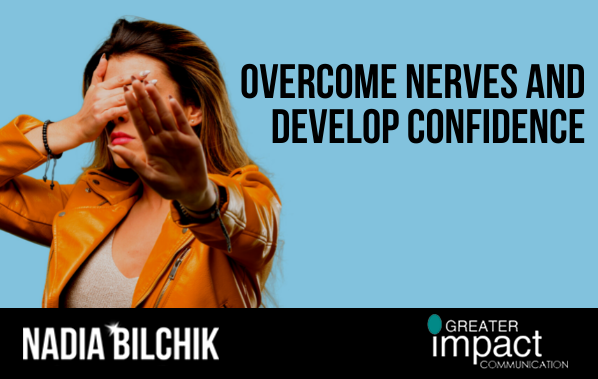
I have been a prime-time anchor and professional speaker and trainer for
the past twenty years, but even I have experienced moments of terrifying
self-doubt, moments when I have broken out into a cold, heart
palpitating sweat in which my usual sense of breezy self-confidence just
seems to drain away. In fact, I had exactly that kind of moment just
before I was scheduled to introduce media mogul, philanthropist and
restauranteur Ted Turner, who was being honored by the Georgia
Restaurant Association. “Am I the right person for the job?” I wondered.
“How could I possibly do this justice?
Ten minutes later, I walked to the podium to warmly welcome Ted Turner
to one of Atlanta’s premier events – and received numerous compliments
after the event for the “polish” and “warmth” of my performance. It was
as if that paralyzing moment of self-doubt had never existed.
So, how do you deal with moments of self-doubt, times when you have a
crisis of confidence and question your knowledge and ability? How do you
transition to both feeling and projecting a sense of confidence and
strength?
The first step is to remind yourself that you are not alone. Self- doubt
is normal; these kinds of moments can and do happen to anyone in many
kinds of situations. Numerous people on every level, including
accomplished executives and experienced classroom teachers, experience
self-doubt, whether the task at hand is to address a roomful of
executives, or a classroom full of fractious teenagers.
The next step is to use the tried and true strategies of internal
dialogue and visualization to re-establish your sense of your own power
and strength. According to Honore de Belzac, “Nothing is a greater
impediment to getting on well with other people than being ill at ease
with yourself.” Our inner dialogue-what we communicate to ourselves-has
a huge impact on the way we project ourselves in our outer world. At
times of self-doubt, you need to change the tape.

One way is to take a deep breath to neutralize the adrenalin that is
pumping through your system and think back to the positive moments of
your life – what I call your “positive emotional memory database” –
times when you have experienced moments of accomplishment and
satisfaction. Start reflecting on memorable moments of triumph you have
experienced. These memories can be anything from the exhilaration of
winning that tough competition, to capturing a scholarship to your dream
school or interviewing successfully to land that perfect job.
In my case, I visualize the moment when I had the opportunity to
interview then South African President Nelson Mandela, or when I
co-chaired the Women in Film awards with the actress Alfre Woodard. By
recalling these past positive experiences, moments when you have felt
especially empowered, you will be able to replace feelings of doubt with
moments of triumph.
Another very effective “mind trick” to prepare for the task at hand is
to think about how famous Olympic champions prepare for the dive of a
lifetime. How do they do it? It’s time to do the dive. To psyche
themselves up, in their head, they “play a video” of the perfect dive.
Then they stand up on the diving board and visualize themselves
performing this perfect dive, as they’ve done before in other
competitions. Then they execute the perfect dive. In your case, if you
visualize the positive emotional feedback of yourself making an
impressive speech or presentation, you will find yourself looking
forward to the challenge, as opposed to dreading it.
Yet another strategy is what I call making an “attitude adjustment.” In
a book called Mind Power, John Kehoe wrote that while most people
believe they are only as good as their last experience that is just not
true. We are a combination of all of our successes. This means that the
challenge that you are facing right now will not make or break you, even
if it feels that way at the time. In fact, even if the particular task
facing you may not be the slam-dunk you are accustomed to, it doesn’t
mean that all of that past success will just evaporate.
Once you have re-established a sense of inner ease and confidence, you
can begin to craft your communication. You will be amazed at how an
internal sense of ease and confidence can be communicated externally.
Remember, whether it is one person, or more than one thousand people,
your audience cannot see your self-doubt; rather, they can only see what
is presented to them.
Nadia
Lets stay connected:
OWN YOUR CONFIDENCE: TECHNIQUE NO. 1
Own Your Confidence: Nadia Bilchik at TEDxEmory
The Greater Impact of Confidence and Attitude



